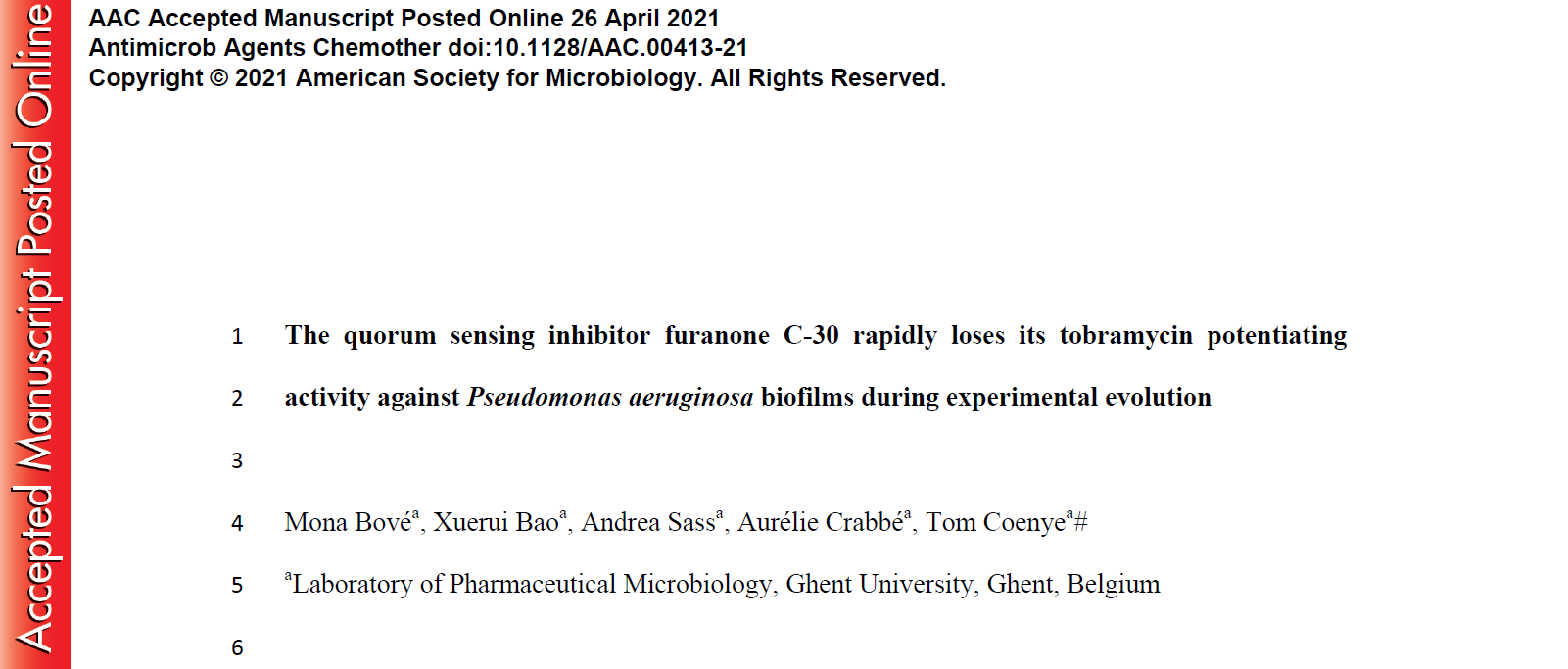NEW PUBLICATION: Metabolism measurements reveal insights into antimicrobial resistance
(STOCKHOLM) Symcel— a company providing real-time metabolic measurements for cell culture with their product calScreener™ ̶ was recently featured in a peer-reviewed publication showing how metabolic data shed new light on the evolution of antimicrobial resistance.
The study published in Antimicrobial Agents and Chemotherapy sought to determine if Pseudomonas aeruginosa populations could evolve resistance to tobramycin when combined with the quorum sensing inhibitor C-30 which is known to potentiate tobramycin activity.
The study showed that over repeated treatment cycles, C-30 lost its ability to make Ps. aeruginosa cells more sensitive to tobramycin. The study used two different techniques to visualise the impact of different treatments on the bacterial populations; colony counts and metabolic measurements using the calScreener.
When looking at the colony counts, tobramycin and C-30 alone have almost no effect on the colony forming units. However, when combined, there are several log reductions in cfu counts which recover after around 8 treatment cycles.
This finding is interesting on its own but doesn’t explain why C-30 loses its ability to enhance tobramycin activity. However, this becomes clear when analysing the metabolic data from the calScreener. While the cfu counts showed that tobramycin and C-30 had no effect on their own, the metabolic profiles revealed an entirely different picture. The metabolism of Ps. aeruginosa was significantly affected when either C-30 or tobramycin were added on their own. This suggested that both compounds were indeed exerting an effect on the microbial population which could be driving selection pressure that could account for the lack of activity over repeated treatment cycles.
Sequencing confirmed this by showing that exposure to repeated treatment cycles of C-30 resulted in a very specific mutation that was likely producing activity in an efflux pump that was removing C-30 from the cells. This removal from the cells explains why C-30 was no longer able to potentiate the activity of tobramycin.
The metabolic readout provided by the calScreener was a perfect complement to the traditional cfu counts as it gave information that was completely absent from cell count data alone.
For more examples of how the calScreener can provide deeper insights in a host of microbial systems, take a look at our recent webinar which will go through many more examples of how metabolism measurements are helping researchers all around the world understand more about their experimental systems.
Reference
The quorum sensing inhibitor furanone C-30 rapidly loses its tobramycin potentiating activity against Pseudomonas aeruginosa biofilms during experimental evolutionMona Bové, Xuerui Bao, Andrea Sass, Aurélie Crabbé, Tom CoenyeAntimicrobial Agents and Chemotherapy Apr 2021, AAC.00413-21; DOI: 10.1128/AAC.00413-21
